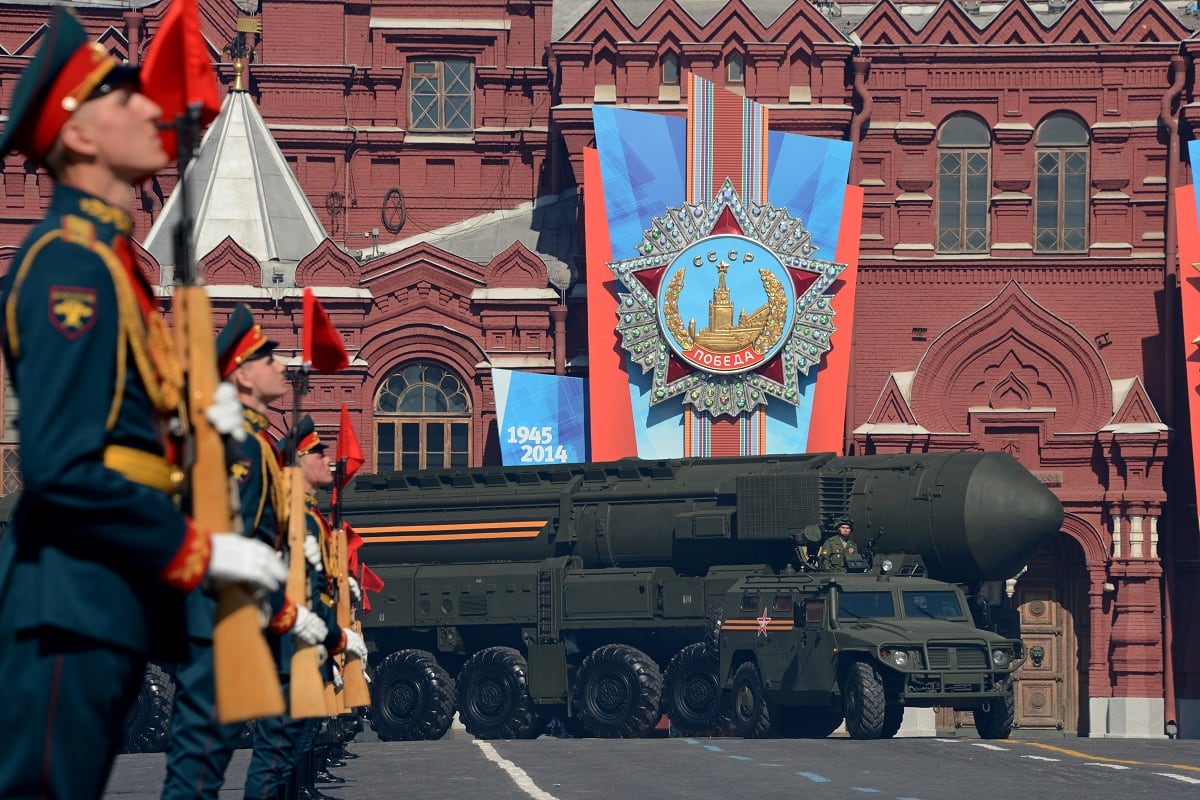Washington is convinced that Russia has violated a pivotal nuclear arms pact, citing it as the main reason for U.S. President Donald Trump’s decision to dump it, a senior U.S. official said Tuesday during his visit to Moscow.
U.S. National Security Adviser John Bolton, speaking Tuesday following two days of talks in Moscow, said the U.S. has determined that Russia has been in violation of the Intermediate-Range Nuclear Forces (INF) Treaty since 2013.
The prospective U.S. withdrawal from the pact isn’t the threat to Europe, but instead “the threat is the Russian missiles already deployed,” Bolton said.
RELATED

Moscow has denied any violations. Asked if the pact could be rescued if Russia comes back to compliance, Bolton said it's hard to expect that given Russian denials.
President Vladimir Putin told Bolton he would be ready to meet with Trump when they both visit Paris next month. But he said Russia was puzzled by the U.S. “unprovoked moves that are hard to call friendly.”
Putin said it’s important to maintain Russia-U.S. dialogue despite their differences. He said his last meeting with Trump in Helsinki in July was useful, adding that he would be open to meet with Trump in France if he agrees.
Bolton responded that Trump would look forward to seeing Putin in Paris on the sideline of events marking 100 years since the armistice ending World War I.
During the meeting, Putin alluded to the U.S. coat of arms, which shows an eagle holding a bundle of 13 arrows in one talon and an olive branch with 13 olives in another. Laughing, Putin asked if the eagle ate all the olives.
Trump on Monday restated his threat to pull out of the INF Treaty because of alleged Russian violations.
The treaty prohibits the U.S. and Russia from possessing, producing or test-flying ground-launched nuclear cruise and ballistic missiles with a 300- to 3,400-mile range.
In response, the Kremlin has rejected a suggestion that Trump’s decision could pave the way for a new treaty.
Trump warned that the U.S. will begin developing such weapons unless Russia and China agree not to possess or develop them. China wasn’t a party to the treaty.
Putin’s spokesman, Dmitry Peskov, told reporters on Tuesday that right now “there are no prospects for a new deal” to replace the INF and that it is a “dangerous position” to give up the INF treaty without an alternative in sight.
A LOOK AT THE INF TREATY
What is in the INF Treaty? The pact was signed by U.S. President Ronald Reagan and Soviet President Mikhail Gorbachev in 1987. It eliminated an entire class of ground-launched ballistic and cruise missiles with a range of 500 to 5,500 kilometers (300 to 3,400 miles), obliging each country to destroy their stockpiles and banning their deployment.
By June 1991, the U.S. destroyed 846 such missiles and the Soviet Union dismantled 1,846 of them in accordance with the treaty. A 10-year period of on-site inspections followed to verify the compliance.
The INF Treaty has been widely hailed as a cornerstone of strategic stability, helping to ease U.S.-Soviet tensions and put an end to the Cold War-era arms race.
Why does the U.S. exit from the treaty matter? Some politicians in the U.S. and Europe fear that the U.S. walkout could spur a new arms race in which the U.S. and Russia would build up their nuclear arsenals, further eroding global stability.
Intermediate-range ballistic missiles take just a few minutes to reach their targets in Europe, a much shorter flight time compared to intercontinental ballistic missiles. That would leave practically no time for political leaders to weigh a response after getting a warning about a missile attack, increasing the chance that a false alarm could trigger a global nuclear conflict.
Trump's move has caused a mixed reaction among U.S. allies. Britain has voiced support, while Germany expressed concern, saying it touches on core European interests. The European Union urged the U.S. to consider the consequences, noting that "the world doesn't need a new arms race that would benefit no one and on the contrary, would bring even more instability."
Are there other U.S.-Russian nuclear arms reduction agreements? The only other U.S.-Russian nuclear arms reduction deal is the New Start Treaty that went into force in 2011 and is set to expire in 2021. It limits the number of nuclear warheads and their launchers, restricting the U.S. and Russian nuclear arsenals to no more than 1,550 deployed warheads for each country.
Bolton and Russian officials have discussed the possibility of extending the pact by five years, but no specific arrangements have been made yet.





